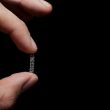According to this new study, in patients with coronary disease, diabetes, and chronic kidney disease who underwent revascularization through angioplasty or surgery, events are similar. This is one of the first studies painting the real picture for the prognosis of patients revascularized in these conditions (diabetes plus chronic kidney disease). At first sight, these<a href="https://solaci.org/en/2019/03/04/revascularization-in-patients-with-multivessel-disease-diabetes-and-kidney-disease/" title="Read more" >...</a>
The Most Relevant Articles of 2018 in Peripheral Vascular Disease
1- What’s New in the European Guidelines on Peripheral Arterial Disease Since the last version of the European guidelines on the diagnosis and treatment of peripheral arterial disease in 2011, there have been many trials and registries that warrant guideline adjustments in many aspects. The first novelty is the teamwork that gave way to these<a href="https://solaci.org/en/2019/02/04/the-most-relevant-articles-of-2018-in-peripheral-vascular-disease/" title="Read more" >...</a>
Outcomes of Contemporary DES in Patients with Diabetes: Do They Render Freedom Obsolete?
Despite our high hopes for new-generation drug-eluting stents (DES), patients with diabetes still have a different prognosis, both clinical and angiographic, compared with non-diabetic patients. Authors sought to investigate the impact of diabetes on patients who underwent drug-eluting stent implantation in the BIONICS (BioNIR Ridaforolimus Eluting Coronary Stent System in Coronary Stenosis) trial. This<a href="https://solaci.org/en/2019/01/28/outcomes-of-contemporary-des-in-patients-with-diabetes-do-they-render-freedom-obsolete/" title="Read more" >...</a>
The “Ten Commandments” of Myocardial Revascularization According to Europe
The new European guidelines on myocardial revascularization were developed by a joint effort of the European Society of Cardiology (ESC) and the European Association of Cardiovascular Surgery (EACTS). These guidelines are intended to support clinical practice with pragmatic recommendations based on currently available evidence and on personal experience, whenever evidence is missing. Both coronary angioplasty<a href="https://solaci.org/en/2019/01/24/the-ten-commandments-of-myocardial-revascularization-according-to-europe/" title="Read more" >...</a>
Early Strut Coverage and Its Implications for Dual Antiplatelet Therapy
Optical coherence tomography (OCT)-guided drug-eluting stent implantation improves early strut coverage compared with angiography-guided angioplasty. No difference was observed in terms of strut coverage between permanent-polymer everolimus-eluting stents and bioresorbable-polymer biolimus-eluting stents. Short-term dual antiplatelet therapy may be feasible in selected patients with early strut coverage. This study sought to measure early strut coverage<a href="https://solaci.org/en/2018/12/14/early-strut-coverage-and-its-implications-for-dual-antiplatelet-therapy/" title="Read more" >...</a>
AHA 2018 | New-Generation DES Are Similar to Second-Generation DES Beyond Polymer
Sirolimus-eluting stents with biodegradable polymer did not offer better outcomes compared with instant-classic (and undoubtedly valid) everolimus-eluting stents with durable polymer such as Xience. New-generation drug-eluting stents (DES) offer better outcomes than first-generation devices after a 10-year follow-up, according to the ISAR-TEST 4 trial presented at the American Heart Association (AHA) Congress Scientific Sessions and published<a href="https://solaci.org/en/2018/11/30/aha-2018-new-generation-des-are-similar-to-second-generation-des-beyond-polymer/" title="Read more" >...</a>
TCT 2018 | ABSORB IV: Much Life Left for Bioresorbable Scaffolds
Previous studies have documented higher rates of adverse events with bioresorbable scaffolds (ABSORB) compared with metallic drug-eluting stents (DES). However, these studies included lesions smaller than recommended for these scaffolds and a suboptimal implantation technique. The ABSORB IV study, presented by Dr. Stone at TCT 2018 and published simultaneously in The Lancet, randomized patients to polymeric everolimus-eluting scaffold Absorb<a href="https://solaci.org/en/2018/10/08/tct-2018-absorb-iv-much-life-left-for-bioresorbable-scaffolds/" title="Read more" >...</a>
TCT 2018 | MAIN COMPARE: Angioplasty vs. Surgery for Left Main Coronary Artery Disease at 10 Years
Several studies (some of them recent, some of them not so much so) have compared left main coronary artery angioplasty and myocardial revascularization surgery. Combined, these works compose a large corpus of evidence, but follow-up has not gone beyond 5 years in any case. The main aim of this study (presented at TCT 2018 and published simultaneously<a href="https://solaci.org/en/2018/10/08/tct-2018-main-compare-angioplasty-vs-surgery-for-left-main-coronary-artery-disease-at-10-years/" title="Read more" >...</a>
TCT 2018 | BIONYX: Durable Polymer-Coated vs. Ultrathin-Strut, Bioresorbable Polymer-Coated DES
This work, presented at TCT 2018 and published simultaneously in The Lancet, is the first randomized study comparing a zotarolimus-eluting stent with a new thin-strut structure and limited radiographic visibility (Onyx), and a bioresorbable polymer-coated sirolimus-eluting stent (Orsiro). Onyx was developed to improve visibility while reducing strut thickness. To that end, a dense platinum–iridium core and<a href="https://solaci.org/en/2018/10/08/tct-2018-bionyx-durable-polymer-coated-vs-ultrathin-strut-bioresorbable-polymer-coated-des/" title="Read more" >...</a>
TCT 2018 | SORT OUT IX: Polymer-Free DES with Ultra-Thin Struts vs. Bioresorbable Polymer- Based DES
Polymer persistence in 1st and 2nd generation DES meant to allow drug release has been associated with a chronic inflammatory response that might be associated to restenosis, neo atherosclerosis and stent thrombosis. This is the rationale behind the development of polymer free and bioresorbable polymer-based DES. They have both been compared against permanent polymer DES,<a href="https://solaci.org/en/2018/10/03/tct-2018-sort-out-ix-polymer-free-des-with-ultra-thin-struts-vs-bioresorbable-polymer-based-des/" title="Read more" >...</a>









